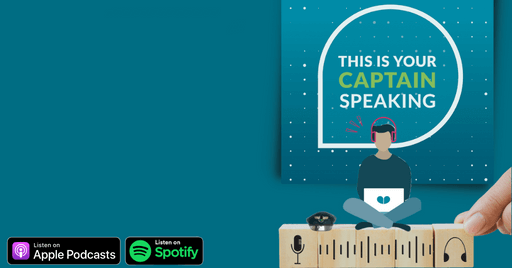
Multi-, cross-, and omnichannel marketing: At first glance, this just looks like a lot of channels – and the terms are often used as synonyms. But, in reality, these are three different concepts. Read on to find out what these terms mean, how they differ, and what the trend towards omnichannel marketing means for your business.
Imagine you’re discussing the growing number of channels in marketing with a few people at work. Some colleagues are talking about cross-channel marketing, others about multichannel marketing, and somehow everyone means the same. Sound familiar? The problem is that these concepts are not identical. They might be similar, but they refer to different strategies.
You could summarize it like this: Multichannel marketing developed into cross-channel marketing. And cross-channel developed into omnichannel – the ultimate in modern marketing. But let’s start with phase one.
Multichannel marketing: Several channels, operating separately

Today, almost every company makes use of several channels. But many approach each channel individually.
Imagine you find a leaflet advertising a bookcase – it’s perfect, the one you’ve been hunting for! The next day, on your way to work, you take your phone out of your bag and visit the furniture company’s website to take a closer look at the bookcase again. You can’t simply continue where you left off yesterday. Instead, you have to search for the bookcase all over again.
A week later you decide to make the purchase. The website shows the bookcase as in stock but, to make sure, you ring up your local branch directly and check before you set off. When you arrive at the store, you ask an employee where it is. Eventually, you make your way to the checkout with the bookcase and pay: Success – job done!
You used many different channels on the way to your buying decision. A print brochure, the mobile version of the website, your phone, and the store itself. But none of the channels were connected – with each step, you had to start at the beginning again.
Multichannel marketing provides customers with several different channels for communicating with a company and making purchases. If you don’t like making phone calls, you can use the website. If you hate chatbots, you can call. If the thought of a trip to a furniture store has you breaking out in a sweat, you can order your bookcase online and have it delivered.
All that sounds pretty good.
There’s just one big disadvantage: Because the channels are unconnected, they are competing with each other. Each customer has to decide which channel they prefer and where they can find the information they need the quickest.
So, nowadays, multichannel marketing is pretty much the absolute minimum. Small companies with a low marketing budget provide different channels so their customers can access information and contact the company more easily.
But well-known brands need to go a step further and ensure that there are no gaps between the different channels in the customer journey. They use – you guessed it – cross-channel marketing to create a consistent experience.
Cross-channel marketing: Several connected channels

Cross-channel marketing enables customers to move seamlessly from one channel to the next.
Going back to our example, the brochure advertising the bookcase would include a code next to the product, which customers could scan using the furniture store’s app. No searching through the app to find the bookcase – you arrive directly at the product description. You then save the bookcase for later or add it to your basket.
Back at home, you log into your customer account on your PC and simply click on your basket to view the product in more detail. You decide to make the purchase – but you are never at home when the delivery van comes so you select click and collect, choosing to pick up your new bookcase yourself. Instead of hunting through half the store, you go straight to the checkout where your bookcase is waiting for you.
After you’ve paid, a promo code for your next purchase appears in the app – you can redeem it using the online shop or in-store. Once you’ve redeemed the code on one channel, it can no longer be used elsewhere. All these channels are connected rather than existing in separation.
Many companies are already making successful use of cross-channel strategies like these to make the shopping experience easier and more enjoyable for their customers.
But other companies have already taken the next step towards the ultimate customer experience: They use omnichannel marketing.
Omnichannel marketing: Multiple on- and offline channels that merge and connect seamlessly

Omnichannel marketing does more than provide a seamless transition between channels. It allows customers to combine the different options and use them simultaneously for a whole new shopping experience.
Picture this: You want to buy a particular product. So you go online to see what options are available. But you prefer to make the purchase at a brick-and-mortar store so you can hold the product in your hands before you buy it. You drive to a branch – where you start by getting out your phone so you have all the product information you need. You also take a second look at the reviews before you make your decision.
You therefore wanted to use multiple channels at the same time. Responding to this need, companies enrich their in-store shopping experience with digital channels. Think of cosmetic brands that provide in-store tablets so customers can try on makeup virtually. The ultimate shopping experience emerges when you can save the images and tested products to an account to later choose the products in the comfort of your home, ordering online at a time that suits you.
So how would this work with our example? You decide which bookcase you want to purchase, but want to drive to the store to see what else is available. The app navigates you through the showroom – and straight to your bookcase. Next to it, you find a sideboard that would match it perfectly. You use the store’s app to scan the product code – you want to read the reviews.
But then you see that the sideboard is not in stock. You don’t want the hassle of having to drive back to the store again. An employee carrying a tablet comes up to you and orders the sideboard. You take the bookcase home with you right away and have the sideboard delivered to your apartment.
Multi-, cross-, and omnichannel marketing: One idea, three different development stages

So the difference between multichannel and cross-channel marketing is pretty clear. But the boundaries between cross-channel and omnichannel marketing are more blurred.
In principle, the idea is the same: To create a shopping experience that is as enjoyable as possible. While it used to be enough for companies to be present on several channels, customers now expect an easy and seamless transition between them.
Companies aiming for top-level marketing not only enable seamless usability but also ensure that the channels merge with each other and can be used simultaneously.
A great idea. But how can an omnichannel strategy be implemented in practice? Especially if you don’t sell bookcases and your business model is very different.
We have put together a free guide to help you take your first steps into the world of omnichannel marketing.
What is the difference between a multichannel strategy and an omnichannel strategy?
How does an omnichannel marketing strategy enhance customer engagement?
Why is it important to use multiple channels in marketing efforts?
What are the key differences between multichannel and omnichannel marketing?
How can businesses ensure a consistent customer experience with an omnichannel strategy?
What role does an online store play in a multichannel marketing strategy?
Why is customer experience central to omnichannel and multichannel strategies?
How can a business implement an effective multichannel approach?
What are the benefits of an omnichannel retail strategy?
How do multichannel marketing strategies help in reaching more customers?
Author
Johanna Dungl
MARMIND helps our marketing team complete projects much faster.
Frank Friese
MARMIND Subproject Manager, Deutsche Telekom
MARMIND solves the challenges that marketing departments are confronted with on a daily basis.
Brigitte Kommer
Marketing Manager, Sharp NEC Display Solutions Europe
MARMIND has helped our marketing arrive in the 21st century.
Paul Carruzzo
Head of EMEA Marketing Performance, Invesco
The MARMIND team really understands how enterprise marketing works.
Annika Schünemann
Brand Management and Marketing Control, WAGO















